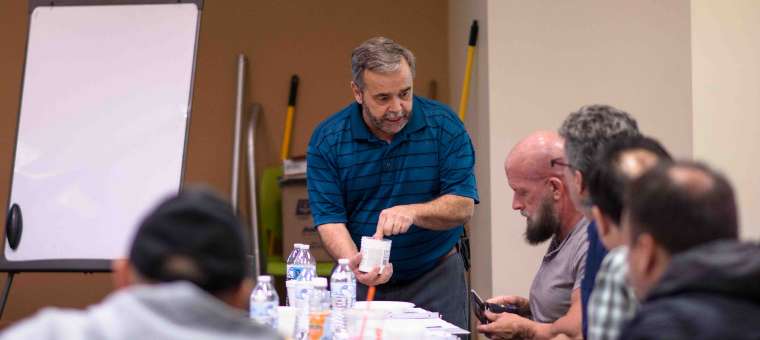Wall Washing Procedures
The walls in homes and offices don’t normally need much attention. The occasional smudge or splatter can usually be wiped up with warm, soapy water and gentle rubbing from a clean, damp towel or magic eraser product. Most dust and dirt can be removed with a high-quality feather or microfiber duster.
However, when the walls in your facility are covered with soot, smoke, grease, or water stains, they may benefit from a thorough washing. Washing walls prior to re-painting can also help the paint and/or primer adhere better.
Basic Tips for wall washing:
- Always test cleaning methods and products in an inconspicuous spot (such as the back of a closet) before cleaning to ensure you won’t remove paint or damage the wall.
- Clear your work area. Remove all electric cords. Move or cover furniture to prevent damage from drips or splashes. Lay down a drop cloth to protect carpet and prevent stains.
- Begin by removing loose dirt and cobwebs from the wall surface with a vacuum or clean, dry cloth. Cleaning without removing these will result in creating and spreading mud/dirt across the surface.
- Always start at the bottom of the wall and work your way to the top. While it may seem counterintuitive, it’s easier to clean drips off a clean wall than a dirty one.
- Overlap the cleaning areas to prevent streaks.
- Walls that are painted with a gloss or semi-gloss paint generally respond well to cleaning.
- Walls with a flat paint generally respond well to spot cleaning. If the entire surface is dirty, it is better to simply repaint the wall, rather than waste time and money cleaning it.
Wall Washing Using the Flat Mop Method
This method is for nonporous or semi-porous wall surfaces. It differs from standard wall washing in that it uses the technology of flat mops made of microfiber.
Directions:
- Clear room of furniture and/or lay down drop cloths.
- Prepare Smoke-Solv Liquid Wall Wash, diluted at 4-32 oz per gallon of water depending on severity of soil, into one flat mop bucket. Put clean water in another other bucket.
- Dust the walls with a wall duster
- Dip the flat mop head attached to the handle into the cleaning solution. Wring it out tightly. Work in 8' x 8' floor-to-ceiling area, applying the solution and scrubbing with the mop head as needed. Be sure to apply the solution from the bottom up.
- Wring out the mop head in a clean rinse solution and wipe off the surface with the head. If needed, dry the wall with a towel.
- Repeat these steps until all walls are finished.
Wall Washing Using a Sprayer Method
This method of wall washing can be used for all wall surfaces to remove soot, smoke, grease, and most water stains.
Directions:
- Remove furniture and/or cover furniture and floor with drop cloths.
- Dilute Chemspec Liquid Wall Cleaner at 4-32 oz per gallon of water and put into a pump-up or electric sprayer.
- Using a lambswool duster, dust the walls.
- Using the sprayer, spray chemical on wall starting at the bottom of the wall by a corner and move the nozzle extension up the wall. Keep the nozzle about 12 inches from the wall surface. Do not allow rundowns. Do not wipe the surface if you are cleaning porous wall surfaces. Nonporous and semi-porous surfaces must be wiped with a damp sponge to remove dirt.
- Wipe down any overspray and vents and other fixtures with a dry cleaning sponge after spraying. Be careful to not touch porous wall surfaces with the sponge. Doing so may cause streaking and staining.
- Continue cleaning the rest of the wall in the same manner.
Always test material for colorfastness, follow label directions, and never mix product unless specified in the label directions. Each situation reacts differently and results may vary.



